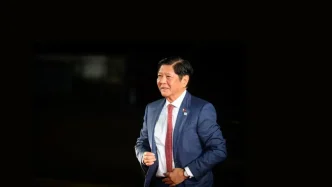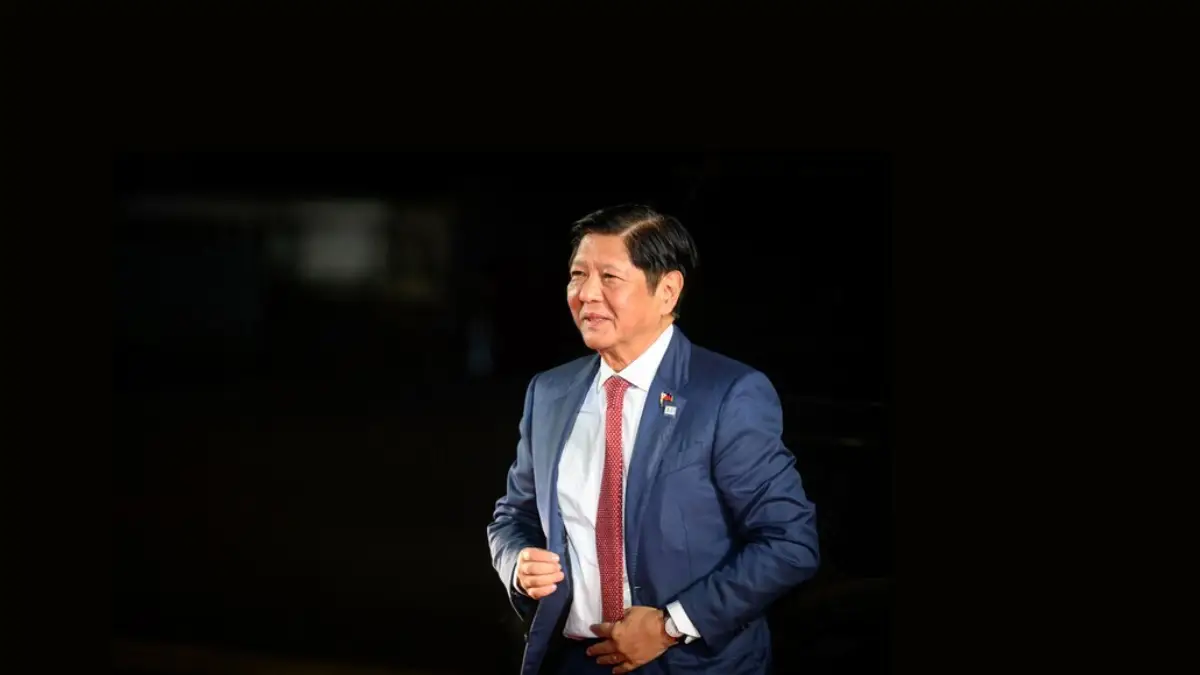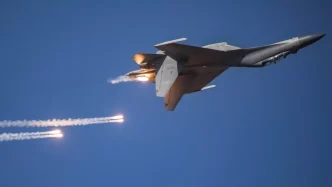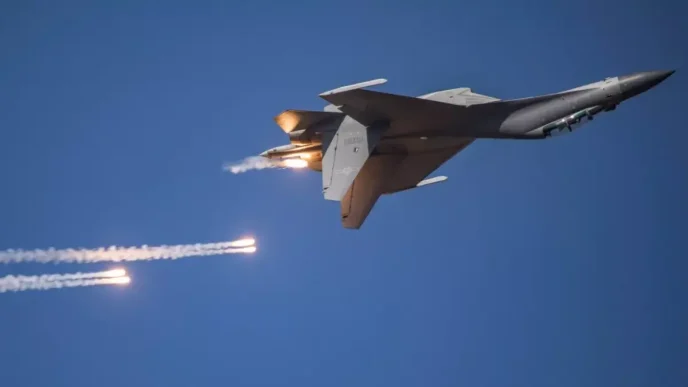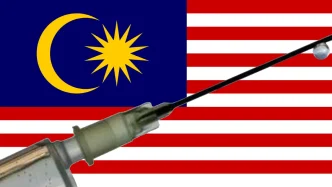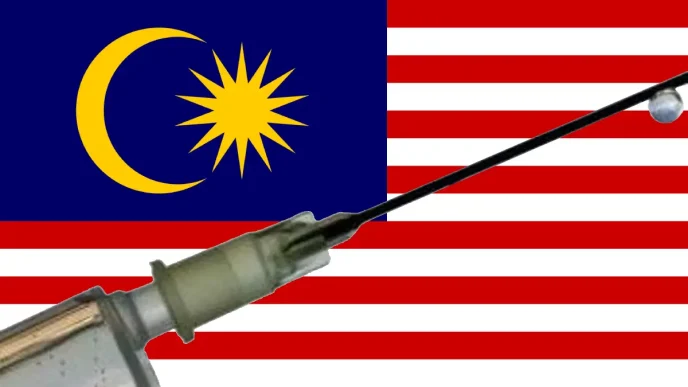As tensions simmer between the United States and China over Taiwan, the Philippines finds itself in an increasingly precarious position. President Ferdinand Marcos Jr. has openly acknowledged that the country cannot remain a bystander if an all-out conflict erupts, citing its geographic proximity to Taiwan and the urgent need to protect 150,000 overseas Filipino workers (OFWs) on the island. This marks a significant shift from the policies of his predecessor, Rodrigo Duterte, who sought a more conciliatory stance toward Beijing. With military agreements deepening ties with Washington and local opposition to foreign military presence growing, the Philippines is navigating a complex web of national security, regional stability, and economic interests.
Geopolitical Realities and Strategic Necessity
The Philippines’ location in the First Island Chain—a strategic line of islands stretching from Japan through Taiwan to the Philippines—places it at the forefront of any potential conflict over Taiwan, which China claims as part of its territory. President Marcos has emphasized the inevitability of involvement, stating in 2023 that it is “very hard to imagine a scenario where the Philippines will not somehow get involved.” More recently, he reiterated the growing external threats and the need for preparedness, highlighting how the country’s proximity to Taiwan—just 500 kilometers from northern Luzon to Kaohsiung City—amplifies its strategic significance.
This geographic reality has driven closer military cooperation with the United States. In 2023, the two nations expanded the Enhanced Defense Cooperation Agreement (Edca), originally signed in 2014, to include four additional military sites in the Philippines. Three of these—Naval Base Camilo Osias and Lal-lo Airport in Cagayan, and Camp Melchor dela Cruz in Isabela—are located in northern Luzon, positioning US forces within striking distance of Taiwan. Officially, the Philippine government has framed these sites as hubs for disaster response and humanitarian aid. However, defense analysts argue that their placement suggests a clear military intent in the context of a potential US-China conflict.
Chester Cabalza, president of the think tank International Development and Security Cooperation, has underscored the broader implications of a Chinese takeover of Taiwan. He argues that such an event would send shockwaves through the First Island Chain, directly impacting the Philippines. Cabalza has noted that Taiwan represents a critical piece of China’s regional ambitions, and the increased US military presence in the region is perceived by Beijing as a direct challenge. The Edca sites in northern Luzon, he suggests, could serve as key operational bases for air, cyber, ground, and sea assets, safeguarding Philippine territorial integrity and providing shelter for refugees—including OFWs and Taiwanese citizens—in the event of war.
Local Resistance and Economic Concerns
Not all Filipinos welcome this deepening military alliance with the United States. In Cagayan province, where two of the new Edca sites are located, local leaders have voiced strong opposition. Vice Governor Manuel Mamba, who was the provincial governor in 2023 when the sites were designated, has consistently argued that the US presence offers no tangible benefits to the region and instead heightens the risk of conflict. Mamba has maintained his stance against foreign forces in Cagayan, asserting that the province can handle disaster response independently and does not need to be drawn into international disputes.
Mamba’s concerns extend beyond security to economics. He has warned that the US military presence could jeopardize potential Chinese investments in the region, a priority for a province seeking economic growth. In 2023, he led a delegation to the ASEAN-China Conference on Sustainable Development to foster closer economic and cultural ties with China, emphasizing the importance of maintaining peaceful relations with a powerful neighbor. More recently, in June, Mamba and current Cagayan Governor Edgar Aglipay hosted Chinese Ambassador Huang Xilian to mark 50 years of diplomatic ties between China and the Philippines, expressing hope for strengthened cooperation.
Mamba has also appealed to local residents to resist the Edca designations, framing the US presence as a self-serving move to protect American interests in Taiwan rather than a benefit to Filipinos. He has previously opposed joint military exercises with the US, citing the risk of diplomatic tensions with China. His vision for Cagayan includes Chinese investment in infrastructure projects like a seaport and an airport with a three-kilometer runway, which he believes could transform the province into an international gateway connecting China, Japan, South Korea, and Taiwan.
National Security vs. Local Interests
The tension between local priorities and national security imperatives lies at the heart of the debate over the Edca sites. While Mamba advocates for economic engagement with China and warns against antagonizing a key neighbor, defense experts like Cabalza argue that local leaders must prioritize the broader interests of the Filipino nation. Cabalza has stressed that local governments are natural partners of the national government in defending sovereignty, particularly in times of conflict. He has criticized leaders who overlook the geopolitical significance of their regions, suggesting that aligning with foreign powers over national security interests could carry significant accountability.
Cabalza has also pointed to China’s broader strategic maneuvers in the region as a cause for concern. While the West Philippine Sea—where Manila and Beijing have clashed over maritime claims—lies far from Cagayan, the province’s proximity to Benham Rise and Taiwan makes it a potential flashpoint. He has cited incidents such as debris from Chinese rocket launches falling near Palawan and the discovery of submersible drones in Cagayan waters as evidence of China’s expanding influence. Underestimating these actions, Cabalza warns, reflects a dangerous naivety about the risks posed by active threat actors in Philippine territory.
For the national government, the Edca expansion represents a critical step in bolstering defense capabilities. Plans to upgrade Naval Base Camilo Osias with a new pier and repaired airstrip, alongside the development of a fuel storage facility and command center at Lal-lo Airport, signal a long-term commitment to military readiness. These improvements, initiated in 2023, aim to enhance interoperability between Philippine and US forces, preparing for contingencies that could arise from a Taiwan conflict.
Humanitarian and Regional Implications
Beyond military strategy, the potential fallout from a US-China conflict over Taiwan raises significant humanitarian concerns for the Philippines. The 150,000 OFWs in Taiwan represent a substantial portion of the country’s overseas workforce, contributing vital remittances to the national economy. In the event of war, evacuating and supporting these workers would place immense logistical and financial strain on the government. The Edca sites, particularly those in northern Luzon, could serve as staging points for such operations, doubling as refugee camps for displaced Filipinos and Taiwanese citizens.
Regionally, the Philippines’ alignment with the US risks further straining its relationship with China, which has already expressed displeasure over the Edca expansion. Beijing views the US military presence in the Philippines as part of a broader containment strategy, a perception that could lead to retaliatory economic or diplomatic measures. For a country historically reliant on balancing relations between the two superpowers, this shift under Marcos signals a decisive pivot toward Washington—a move that could reshape Southeast Asia’s geopolitical landscape.
A Delicate Balancing Act
The Philippines stands at a crossroads as it grapples with the implications of a potential conflict over Taiwan. On one hand, deepening military ties with the United States through agreements like Edca offer a measure of security against regional uncertainties and the means to protect national interests, including the safety of OFWs. On the other hand, local leaders like Mamba highlight the risks of entanglement in a superpower rivalry, advocating for economic engagement with China as a path to stability and growth.
As President Marcos navigates this delicate balance, the decisions made today will have far-reaching consequences for the Philippines’ role in the region. With northern Luzon emerging as a critical theater in any future conflict, the country must weigh the imperatives of national defense against the aspirations of its people for peace and prosperity. How this balance is struck remains an open question, one that could define the Philippines’ future in an increasingly volatile part of the world.
